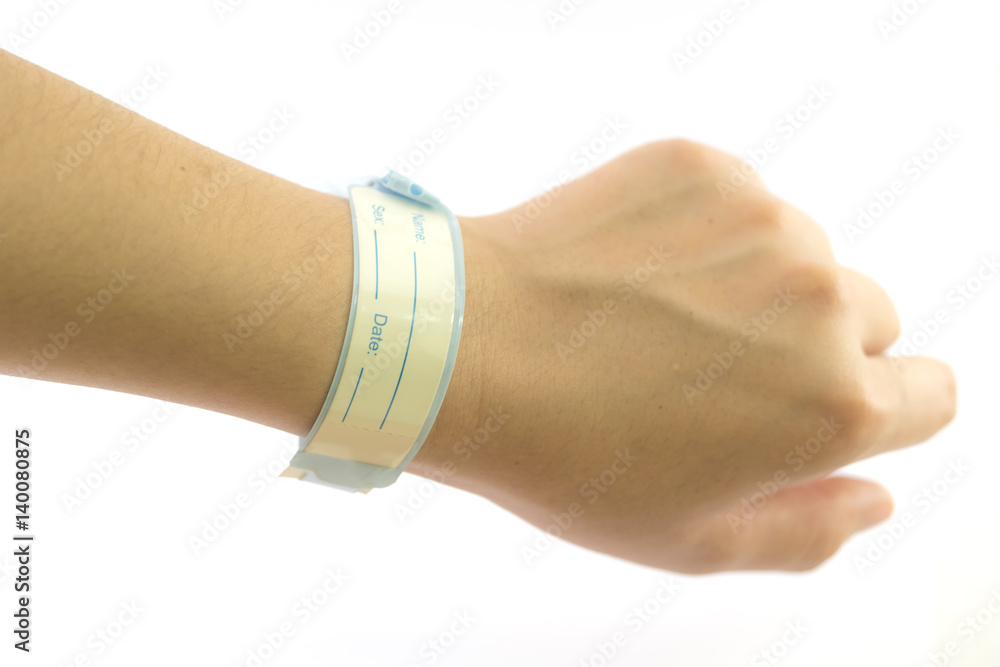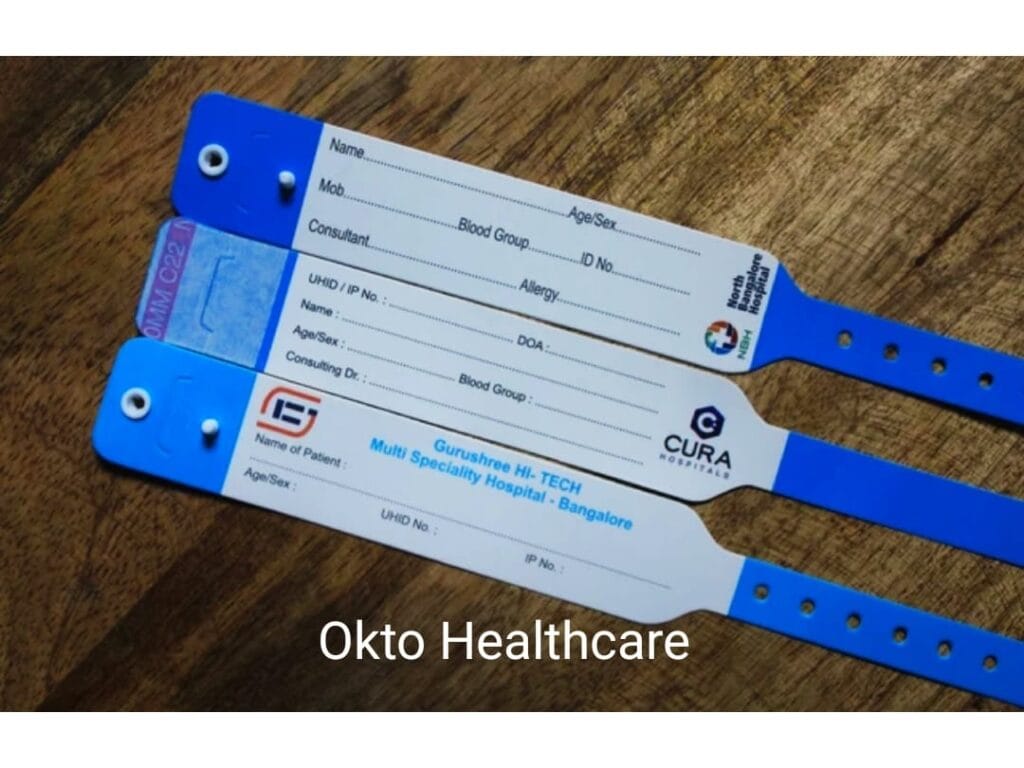Enhancing Security: The Importance of Individual Recognition Bands in Healthcare
In the world of health care, the effectiveness of person identification bands can not be overemphasized, as they serve as a fundamental secure against misidentification and subsequent errors. As we explore the diverse function of these bands, it becomes evident that their significance prolongs beyond plain identification, raising inquiries concerning best techniques and future developments in individual security.
Overview of Client Recognition Bands
Client recognition bands play an important role in ensuring the security and accuracy of person care in health care settings. These bands, generally used on the wrist or ankle, function as an important tool for confirming individual identity, thus minimizing the danger of mistakes in therapy, medicine administration, and other healthcare treatments. Made from long lasting products, person identification bands frequently consist of essential details such as the client's name, day of birth, medical record number, and barcodes or QR codes for scanning.
The application of individual recognition bands is crucial in various healthcare environments, consisting of health centers, outpatient facilities, and long-term treatment organizations. They add to a systematic approach in person monitoring, making it possible for medical care specialists to rapidly and accurately determine clients, specifically in high-pressure circumstances where quick decision-making is important.
In addition, using these bands is straightened with governing criteria intended at boosting client safety and security - Patient Identification Band. By making certain that each client's details is easily proven and conveniently obtainable, health care service providers can maintain a high standard of care, reduce the incidence of unfavorable events, and cultivate a culture of safety and security within health care establishments
Advantages of Accurate Identification
Precise recognition is basic to improving patient safety and security and care high quality in health care settings. It works as the very first line of protection against errors that could result in damaging person results. By making sure that each person is appropriately identified with trustworthy means, such as person identification bands, doctor can dramatically minimize the danger of misidentification, which can bring about unsuitable therapies, medicine mistakes, and also medical mix-ups.
Moreover, accurate client identification facilitates efficient interaction amongst health care teams. When all team member can constantly identify people, they can share important details more effectively, bring about better coordination of care. This is particularly important in emergency scenarios where timely interventions are critical.
Furthermore, exact recognition supports conformity with governing criteria, therefore decreasing the threat of legal consequences for medical care centers. It promotes trust fund in between people and medical care companies, as patients really feel a lot more safe understanding that their identities are being safeguarded.

Usual Challenges Faced
Ensuring reliable individual recognition in health care setups offers a range of challenges that can jeopardize safety and care high quality. One substantial obstacle is the variability in client populations. People may show up in a state of confusion or distress, making accurate recognition tough. Additionally, language barriers can prevent effective communication, complicating the confirmation process.
Another obstacle is the reliance on human aspects in identification procedures. Healthcare experts may unintentionally neglect or misunderstand recognition procedures, particularly in high-stress atmospheres such as emergency situation divisions. This can bring about mistakes, including the administration of wrong therapies or drugs.
Technical concerns likewise posture difficulties. Digital wellness record (EHR) systems are developed to streamline individual identification, system outages or customer errors can interfere with the procedure. Additionally, the physical design of patient ID bands can cause readability problems, specifically in instances where bands are harmed or covered.
Finally, irregular training amongst team relating to identification procedures can result in voids in knowledge and click to read method. Resolving these challenges is essential for enhancing client security and making certain that identification bands offer their desired purpose successfully.
Ideal Practices for Implementation
To effectively execute patient identification bands in healthcare setups, organizations must embrace a multifaceted strategy that prioritizes technology, training, and standardization combination. Standardization involves developing clear protocols for the style, application, and use of identification bands throughout all departments. This makes sure uniformity and decreases the danger of errors linked to variations in band types or identifying techniques.


Training is vital for all healthcare personnel to ensure they understand the value of accurate person identification, exactly how to correctly review and apply recognition bands, and the treatments to comply with in instance of inconsistencies. Normal workshops and refresher course courses can strengthen this expertise and promote a culture of security.
Modern technology assimilation plays an essential duty in enhancing the efficiency of person identification bands. Using barcode scanning or RFID modern technology can simplify the identification procedure, permitting real-time verification of person identifications. Additionally, electronic health and wellness record systems need to be set up to include notifies for mismatches between the recognition band and individual data.
Future Trends in Individual Security
As medical care remains to advance, the emphasis on individual safety and security is likely to intensify, driven by developments in modern technology and a better understanding of systemic dangers. Emerging patterns suggest a shift in the direction of more integrated systems that take advantage of data analytics, expert system, and maker learning to enhance patient identification procedures. These innovations can aid recognize possible security concerns before they intensify, thereby lowering errors linked with misidentification.
In addition, the execution of blockchain modern technology may revolutionize just how patient information is securely shared among doctor, guaranteeing that identification bands are current and consistently exact. This will not only improve client you could check here security yet likewise assist in seamless interaction throughout multidisciplinary teams.

On top of that, the expanding emphasis on tailored medication is anticipated to affect person safety and security protocols. By integrating market and genetic details into identification systems, medical care specialists can tailor therapies a lot more effectively, reducing Get the facts the threats of damaging reactions due to misidentification.
Final Thought
To conclude, patient recognition bands act as a vital element in improving security within healthcare atmospheres. By promoting accurate client recognition, these bands significantly minimize the risk of mistakes connected with misidentification, unacceptable therapies, and medication management. In spite of difficulties in implementation, adherence to ideal practices and the assimilation of arising innovations can additionally boost their effectiveness. Inevitably, the continued focus on durable recognition methods will add to enhanced person results and overall security in healthcare setups.
In the realm of health care, the efficacy of individual recognition bands can not be overemphasized, as they serve as a fundamental protect versus misidentification and subsequent mistakes.Individual identification bands play an important function in making sure the security and precision of client care in health care setups. Made from sturdy materials, individual recognition bands frequently consist of essential details such as the individual's name, date of birth, medical document number, and barcodes or QR codes for scanning.
By guaranteeing that each client is properly identified via dependable methods, such as client recognition bands, medical care carriers can substantially minimize the danger of misidentification, which can lead to improper treatments, drug errors, and even medical mix-ups.
In conclusion, individual identification bands serve as an essential part in boosting safety within health care settings. Patient Identification Band.